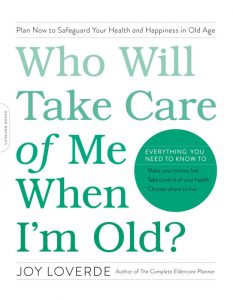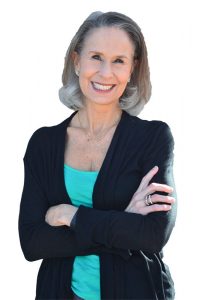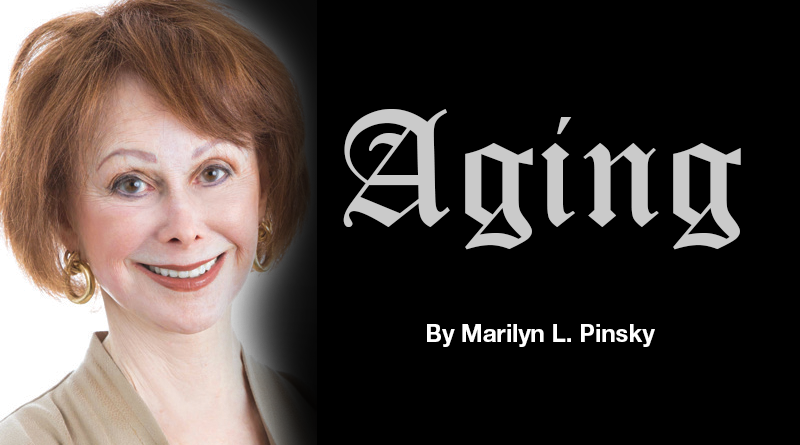Who Will Take Care of Me When I’m Old?
By Marilyn L. Pinsky
 You know how when you find a recipe that you just feel is going to be great, you want to run right out and get the ingredients to make it?
You know how when you find a recipe that you just feel is going to be great, you want to run right out and get the ingredients to make it?
That’s what talking to Joy Loverde about her latest book on ‘planning to get older’ feels like.
Her rationale for specific steps to do sooner rather than later seemed so logical that I immediately started my own planning.
Loverde is the author of “Who Will Take Care of Me When I’m Old: Plan Now to Safeguard Your Health and Happiness in Old Age.”
“You can look at this book cover and say, wow — what an in-your-face title this is! I didn’t beat around the bush,” said Loverde, “I want people to know what they’re getting into. The reactions that I’ve gotten have been very different, all the way from ‘oh yes, I ask myself this question every day and am so glad to see this being addressed’ to ‘leave me alone. I will deal with whatever pops up when I need to.’”
Loverde want us to look at aging as we would any major endeavor in our lives. To do it successfully takes planning and requires staying organized.
“Do we really want to leave our future up to chance or do we want to control what we can?” she asks. “The magic word is control. Don’t we want to make decisions for ourselves now when we’re mentally capable?”
Loverde explains why we need a game plan and then she provides us with the tools to construct one.
“Death is easy, it’s incapacity that is complicated. Many people fail to plan for incapacity and that’s when the money flies out the window. Incapacity means everything is up for grabs as we may no longer be able to communicate our wishes.”
Crank up the time machine

This is an example of a Loverde planning strategy that introduces us to what old age could be like.
“Observing people who are at least 30 years older and already living our future gives us a better idea of what to plan for.” Loverde says using the time machine as a research tool never fails to surprise her. “I have seen people having fun and living full out. I have also seen people the same age whose lives are just the opposite. Then it’s my responsibility to find out why one person is like this and the other like that. This is a planning strategy you can start doing immediately.”
Loverde gave me an example of finding a research subject. She had finished up as the keynote speaker at an event and was trying to get to the airport to fly to her next engagement. Unfortunately, she was in the middle of Kansas in the epicenter of a snowstorm and could not find a cab willing to take her to the airport. Finally, the sponsor of the event where she was speaking found someone who was willing to brave the storm. “I came outside of the hotel and there was a red, beat-up old Chevy driven by a 90-year-old farmer. He rolls down the window and yells ‘get in’ while cars are sliding all over the street. He was not at all phased by the storm and was driving and talking like it’s a spring day as he drove me to the airport. ‘So you’re married,’ he asked, and the conversation about life went from there.”
Next article: why we need to develop a support network and how to do it. In the meantime, if you want to get started on your plan, Loverde’s book is available in all bookstores and online.
Her website: www:elderindustry.com has more information about the book and you can also download some relevant forms.

